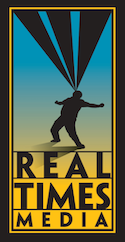
Robert Sengstacke Abbott was an American lawyer, newspaper publisher and editor. Abbott founded The Chicago Defender in 1905, which grew to have the highest circulation of any black-owned newspaper in the country.

The Iowa Bystander was an Iowa newspaper targeted toward an African American audience. It was founded in Des Moines on June 15, 1894, by I.E. Williamson, Billy Colson, and Jack Logan, and it is considered to be the oldest Black newspaper west of the Mississippi. The paper was first called Iowa State Bystander; the term "bystander" given by its editor, Charles Ruff, after a syndicated column "The Bystander's Notes" written by Albion W. Tourgée, a civil rights advocate who wrote for The Daily Inter Ocean. The name was changed to Bystander in 1916 by owner John L. Thompson, who published the paper from 1896-1922. Thompson traveled around the state seeking new subscribers, raising the circulation to 2,000 copies, and changed the paper to a 6-column 8-page layout.
The New Pittsburgh Courier is a weekly African-American newspaper based in Pittsburgh, Pennsylvania, United States. It is owned by Real Times.
The Michigan Chronicle is a weekly African-American newspaper based in Detroit, Michigan. It was founded in 1936 by John H. Sengstacke, editor of the Chicago Defender. Together with the Defender and a handful of other African-American newspapers, it is owned by Detroit-based Real Times Inc. Its headquarters are in the Real Times offices in Midtown Detroit.

The Bud Billiken Parade and Picnic is an annual parade held since 1929 in Chicago, Illinois. The Bud Billiken Day Parade is the largest African-American parade in the United States. Held annually on the city's south side on the second Saturday in August, the parade route travels on Dr. Martin Luther King Drive through the Bronzeville and Washington Park neighborhoods. At the end of the parade, in the historic Washington public park is a picnic and festival. Robert S. Abbott, the founder and publisher of the Chicago Defender newspaper, created the fictional character of Bud Billiken, which he featured in a youth advice column in his paper. David Kellum, co-founder of the newspaper sponsored Bud Billiken Club and longtime parade coordinator suggested the parade as a celebration of African-American life.

African American newspapers are news publications in the United States serving African American communities. Samuel Cornish and John Brown Russwurm started the first African American periodical, Freedom's Journal, in 1827. During the Antebellum South, other African American newspapers sprang up, such as The North Star, founded in 1847 by Frederick Douglass.

Real Times Media LLC is the owner and publisher of the Chicago Defender, the largest and most influential African American weekly newspaper, as well as five other regional weeklies in the eastern and Midwestern United States. Its headquarters are in Midtown Detroit.

John Herman Henry Sengstacke was an American newspaper publisher and owner of the largest chain of African-American oriented newspapers in the United States. Sengstacke was also a civil rights activist and worked for a strong black press, founding the National Newspaper Publishers Association in 1940, to unify and strengthen African-American owned papers. Sengstacke served seven terms as president of the association, which by the early 21st century had 200 members.
The National Newspaper Publishers Association (NNPA), formerly the National Negro Publishers Association, is an association of African American newspaper publishers from across the United States. It was established in 1940 and took its current name in 1956. Its headquarters was in Louisville, Kentucky.
The Bud Billiken Club was a social club for African–American youth in Chicago, Illinois, established in 1923, by the Chicago Defender founder Robert Sengstacke Abbott and its editor, Lucius Harper. The Bud Billiken Club was formed as part of the Defender Junior, the children's page in the newspaper, to encourage reading, appropriate social conduct, and involvement in the community, among the young people of Chicago. Since 1972, the Bud Billiken Club has been known as Bud Billiken Youth. 90 years after it was founded, the organization has grown into a year-round program that supports youth with financial and academic help. They also continue to shine the light on outstanding young people who might have otherwise gone unnoticed.
Louisville Defender is a weekly newspaper in Louisville, Kentucky.
The Pittsburgh Courier was an African American weekly newspaper published in Pittsburgh from 1907 until October 22, 1966. By the 1930s, the Courier was one of the leading black newspapers in the United States.
Percival Leroy (P.L.) Prattis was an American journalist. He was the city editor of the Chicago Defender, the most influential African-American weekly newspaper in the U.S. at the beginning of World War I. Later, he spent 30 years at the Pittsburgh Courier, another influential black paper, rising up to become executive editor.
Harry Sylvester McAlpin Jr. was an American reporter. He was the first African-American reporter to attend a U.S. Presidential news conference in 1944.

The Atlanta Daily World is the oldest black newspaper in Atlanta, Georgia, founded in 1928. Currently owned by Real Times Inc., it publishes daily online. It was "one of the earliest and most influential black newspapers."
The Arkansas State Press was an African-American newspaper published from 1941 to 1959. Dubbed "Little Rock's leading African-American newspaper," its owners and editors were Daisy Bates and L. C. Bates. According to historians, the newspaper was "believed by many to be instrumental in bringing about the desegregation of the Little Rock public schools."
The Houston Defender (Network) is a Black digital information source that originated from the African American newspaper of the same name based in Houston, Texas. Established in 1930 by C.F. Richardson Sr., the newspaper has been a strong voice for the African American community for over 90 years. During its founding, African Americans faced significant challenges, such as racism, discrimination and limited access to education, employment and political power. Today, the Houston Defender Network is pivotal in advocating for social, economic, environmental and political justice for the African American community.
The Tri-State Defender is a weekly African-American newspaper serving Memphis, Tennessee, and the nearby areas of Arkansas, Mississippi and Tennessee. It bills itself as "The Mid-South's Best Alternative Newspaper". The Defender was founded in 1951 by John H. Sengstacke, owner of the Chicago Defender. In 2013, the paper was locally purchased from Real Times Media by the Tri-State Defender Board of Directors

Robert Abbott Sengstacke, also known as Bobby Sengstacke, was an African-American photojournalist during the Civil Rights Movement for the Chicago Defender in Chicago, Illinois. Sengstacke was well known for his famous portraits of Martin Luther King Jr. and other prominent civil rights leaders. Sengstacke inherited the family–owned Sengstacke Newspaper Company. After retiring from journalism in 2015, Sengstacke moved to Hammond, Indiana where he lived until his death due to a respiratory illness in 2017 at age 73.
Frank L. Stanley Sr. was an American newspaper publisher and editor. Stanley co-founded and became sole publisher of The Louisville Defender, the city's leading Black newspaper that he led for 38 years. The Louisville Defender published in the face of regular threats and attacks, persevering under Stanley's belief that "racism is not insoluble." Stanley was general president of Alpha Phi Alpha and a civil rights activist. He drafted the resolution that led to desegregation of higher education in Kentucky, and chaired desegregation committees for the U.S. Secretary of War. Stanley was selected twice as a juror for the Pulitzer Prize Award committee.








